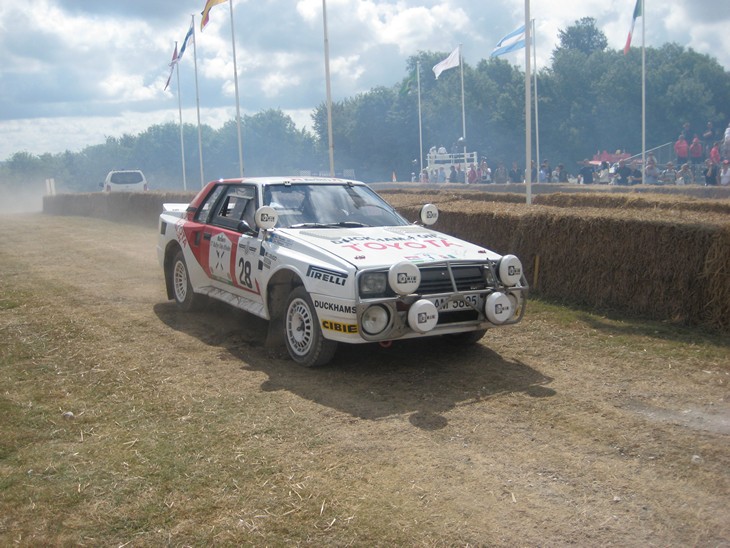Background
The car was built to the Group B specifications, by a Toyota Team Europe (TTE) a company created former Toyota works driver Ove Andersson. Whereas some manufacturers chose to go with 4wd, Toyota preferred to stay with the front engine, rear wheel drive configuration of the road car and was therefore at a disadvantage to the grip of cars such as the Audi Quattro and Peugeot 205T16 on the European sprint events.
TTE’s attention to detail and high standard of preparation resulted in a car that was meant to last and therefore the Celica Twin Cam Turbo (TA64) excelled on the harsh Safari and Ivory Coast endurance events leading to it being nicknamed ‘King of Africa’. The TA64’s record on the African events were
Ivory Coast
1983 - 1st (Waldegard) and 3rd (Eklund)
1985 - 1st (Kankkunen) and 2nd (Waldegard)
1986 - 1st (Waldegard), 2nd (Torph) and 3rd (Weber)
Safari
1984 - 1st (Waldegard)
1985 - 1st (Kankkunen) and 2nd (Waldegard)
1986 – 1st (Waldegard) and 2nd (Torph)
The TA64’s strength also proved its worth in desert conditions taking the 1986, 1987 and 1988 Middle East Rally Championships in the hands of Mohammed ben Sulayem.
The experience gained in developing the TA64 proved perfect preparation for Toyota’s next generation of four-wheel drive rally cars, which succeeded in delivering Toyota three WRC manufacturers’ titles and four drivers’ championship titles.
This Car
This particular car is chassis number 22 and was built by TTE as a works entry for Bjorn Waldegard to compete on the 1985 Ivory Coast Rally. The car was re-built by TTE and entered as a works car by Lars Torph on the 1986 Safari and Ivory Coast Rallies. It was then (UNIQUELY) re-built again by TTE at the end of the 1986 season, but converted to non-turbo form for Toyota Peru to enter the 1987 Los Cammaries Rally in Peru, an event specifically for non turbo or supercharged cars. Despite this departure from its original specification, the result did not stop and the car won the event.
It then stayed in Lima, Peru, winning numerous events over a 10 year period, before being retired and returned to its original specification before being stored. The car was then discovered by its current owner who returned it to the UK. Upon arrival in the UK the owner with the approval of Toyota Motorsport Europe and significant help from former TTE personnel commenced a thorough restoration.
Technical
Engine : four-cylinder, 2.09ltr, in-line, longitudinally front mounted, twin overhead camshafts, two valves per cylinder, 370 bhp
Induction : Fuel Injected, Turbo Charged

